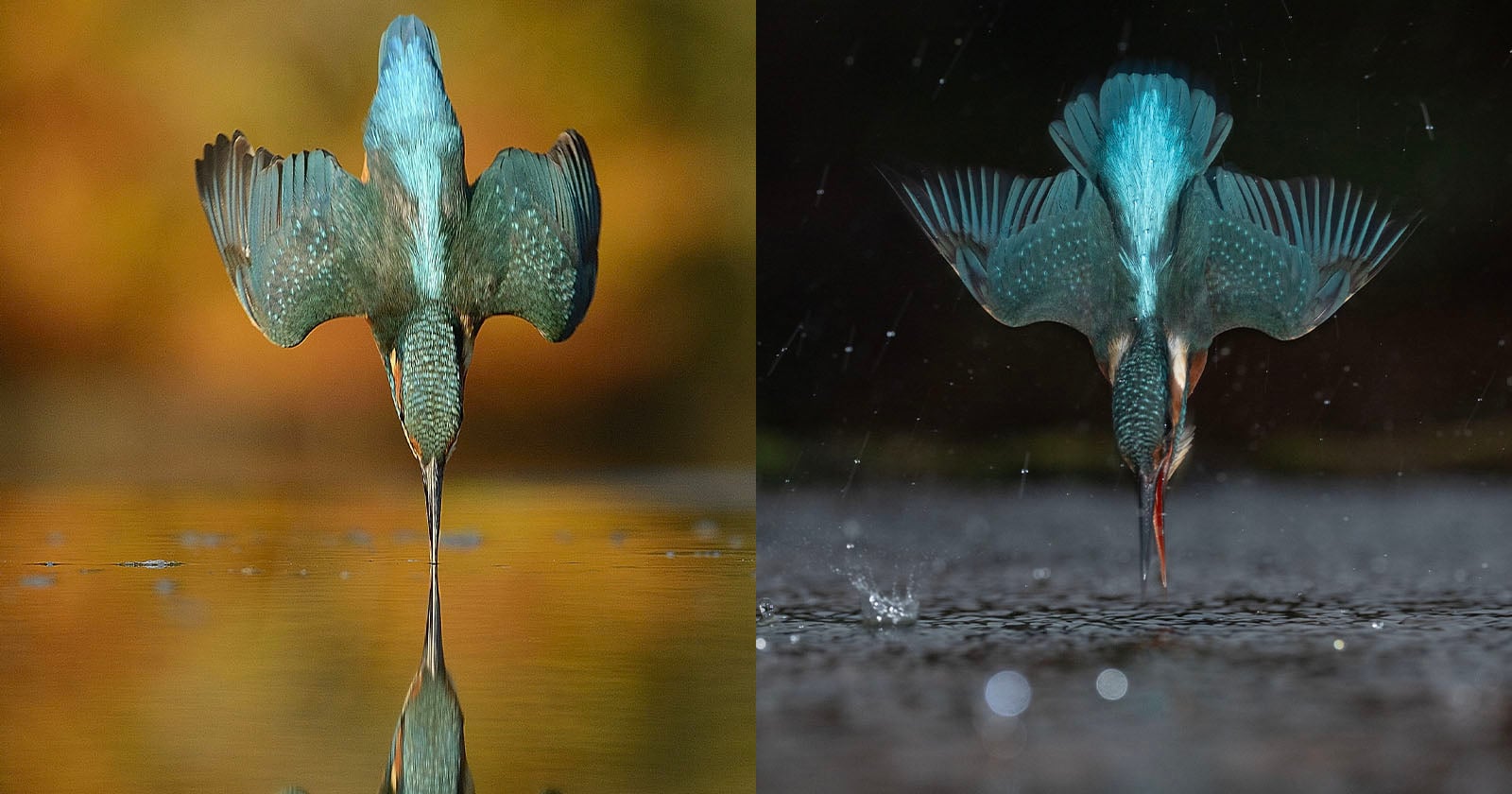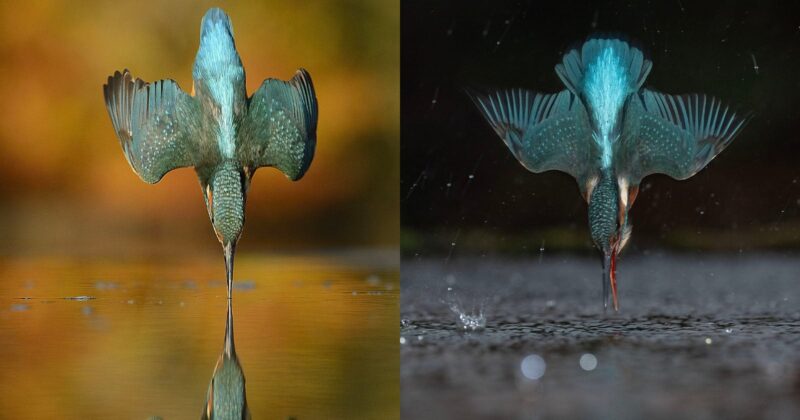 It took six years for Alan McFadyen to capture the kingfisher diving photo on a DSLR camera in 2015, left, and just six minutes to recreate it on a mirrorless camera in 2025, right.
It took six years for Alan McFadyen to capture the kingfisher diving photo on a DSLR camera in 2015, left, and just six minutes to recreate it on a mirrorless camera in 2025, right.
Back in 2015, Scottish photographer Alan McFadyen spent six years and fired off 720,000 shots in his quest to capture the perfect kingfisher photograph — an image that went on to become an internet sensation. A decade later, armed with modern camera technology, he recreated the same shot in just six minutes.
McFadyen tells PetaPixel that after he purchased a new Nikon Z9, he wanted to see how “things had progressed” in the intervening ten years. He shot the original kingfisher photo on a Nikon D4.
“It was night and day. Six minutes instead of six years tells the story,” McFadyen says. “Instead of 12 frames per second, I can now shoot at 30 frames per second, so when a bird dives at 30 miles per hour, it makes it so much more likely you’ll capture it at the right moment.”
McFadyen says that the focusing system is also “incredibly fast” on mirrorless cameras. “It can lock on the kingfisher’s tiny eye at these super-fast speeds,” he adds.
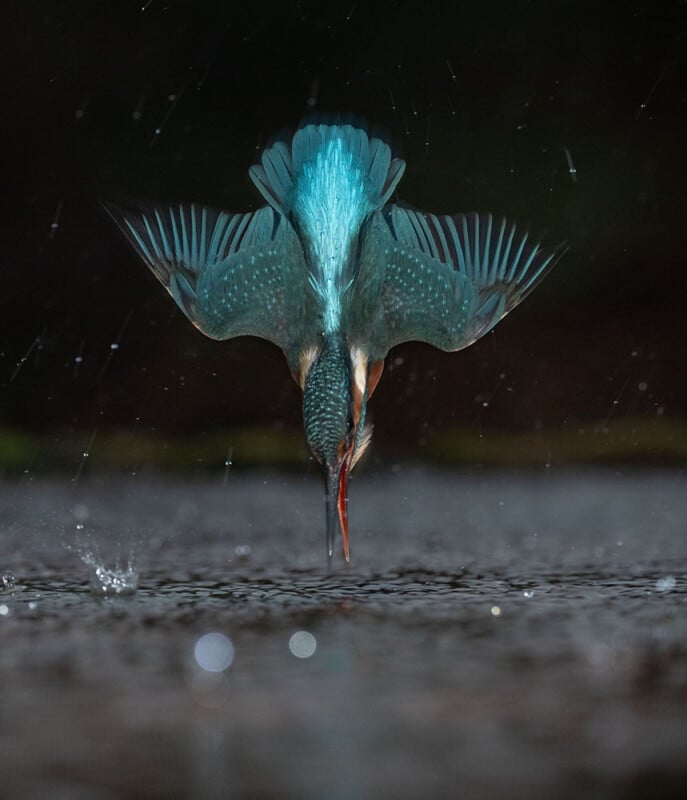 Mirrorless cameras’ incredible burst rates make it more likely the photographer will freeze the action at the exact right moment.
Mirrorless cameras’ incredible burst rates make it more likely the photographer will freeze the action at the exact right moment. 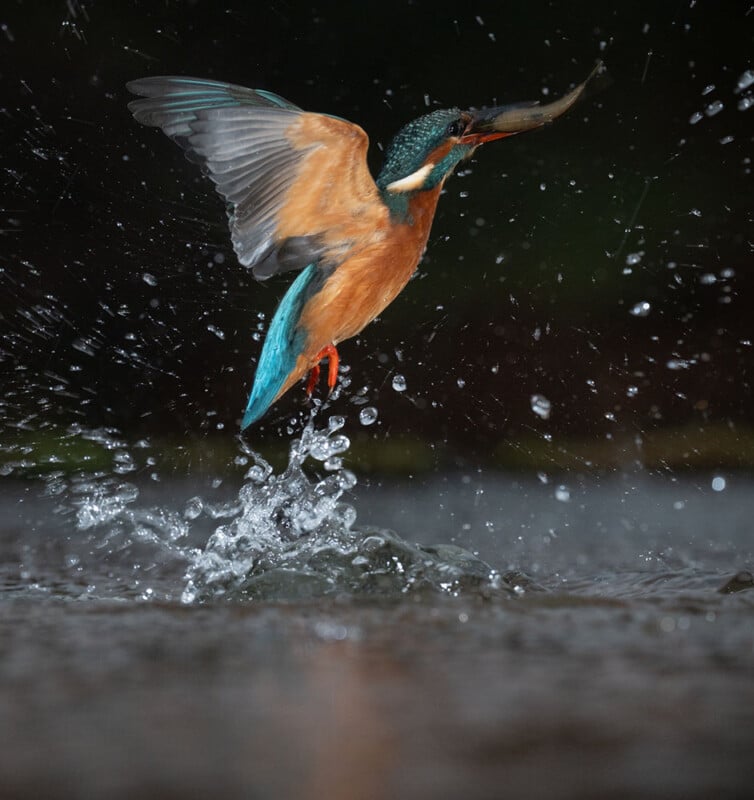 Alan McFadyen
Alan McFadyen
When asked whether a photograph becoming easier to take lessens its value, McFadyen pulls no punches.
“It definitely does, in my opinion, it’s not as challenging now.” But he adds, “With time being precious in life, it’s not such a bad thing. In the wildlife photography game, we face so many challenges out of our control, so it’s a blessing having technology making it a lot easier.”
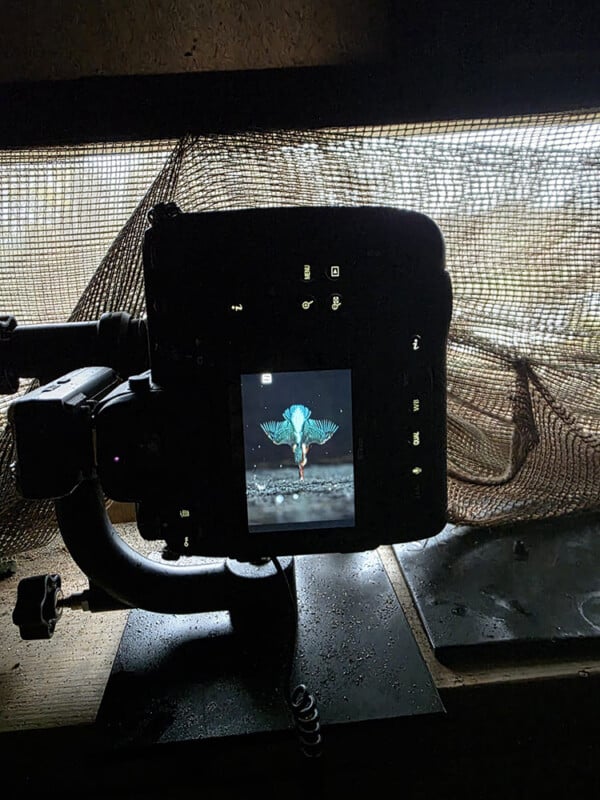 Inside his hide in Soctland, McFadyen immediatley knew he got the shot he wanted.
Inside his hide in Soctland, McFadyen immediatley knew he got the shot he wanted.
McFadyen says he still prefers the 2015 version of the photo. He didn’t deploy flash for that one, while he had to use flash for the 2025 version because of heavy rain.
“It’s still my favourite photo after all these years,” McFadyen says of the first kingfisher photo. “It is still getting shared far and wide online and has really boosted my photography business. I look back proudly on it and never tire of the attention it receives. A lot of time and effort went into obtaining that image, so I’ll never get tired of seeing it.”

More of McFadyen’s work can be found on his Instagram and website.
Image credits: Photographs by Alan McFadyen.

